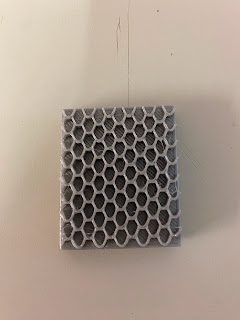History of Lace Production
History of Lace Production
Lace is believed to have originated in Venice and Flanders, with Venice being the home of needle lace and Flanders starting bobbin lace and made its throughout Europe in the mid 16th century.
In France, King Louis's XIV Finance Minister 'Jean-Baptiste Colbert' realised that French aristocrats were spending fortunes on handmade lace so he created the French Lace Market. He did this so he could divert some of the money made through the market to the kingdom, so the royals, and subsequently himself, could profit off of the booming lace markets.
Origin
As lace had evolved from other techniques and practices, it's impossible to say exactly when and where it originated. Italians claim is a will of 1493 by the Milanese Sforza family and the Flemish claim is lace portrayed on the alb of a worshipping priest in a painting by Hans Flemming in 1485 (as shown below).
Lace developed from embroidery technique of 'cut-work' where a design was a cut out of a woven cloth, the edges sewn over to reinforce and to provide further decoration. During the 16th century the technique of lace making changed, allowing lace to become a fabric in its own right, and not relying on a base fabric.
During this development, two distant types of lace were produced, Needle pint lace and Bobbin lace. This is in no way a detailed description of history of lace or its production, but it lays a base for which I will expand upon.
Bobbin Lace
Bobbin lace is created by braiding and twisting lengths of thread wound onto bobbins, to weigh the threads down. Pins are place onto a lace pillow, following a preset pattern, which hold the threads in place. It evolved from passementerie (braid-making) in 16th century Italy. Genoa was famous for its braids and travelled along with the Spanish troops through Europe. The coarse threads produced by wrapping threads with gold or silver or coloured silks gradually became finer, and later bleached linen yarn was used to make both braids and edgings.
Traditionally, linen, silk, wool, or later cotton threads and precious metals were used to create bobbin lace and today its made with a variety of natural and synthetic fibres. The other tools required are a lace pillow, bobbins and pins. Bobbins were traditionally 3.5-4 inches long, made of wood or bone and are used to hold the threads. The bobbin shape had 3 parts, the neck, head and shank. The thread is wound around the 'neck', hitched to the 'head' to stop unravelling and the shank is the handle which you would hold. Bobbins were made unique in each country, with the bobbins used in England having beads on the ends to add weight and so to tension the thread.
The costs of these items used to be inexpensive to purchase, and the techniques easier to master than needle lace, allowing many women to pick up the craft. Lace making was also a better source of income than other textile arts such as sewing or weaving and so many women learned it both as a hobby (for the upper class) and as a source of income.
Needle Point Lace
With needle point lace, more skill was required to learn the craft, however this was the cheaper alternative to bobbin lace for people to start with, as the only materials you need are a couple of needles, thread, fabric and paper. The types of threads used vary widely, as long as they don't break or stretch, so you can make lace with very cheap cotton thread, or more expensive silk thread, making lace making more adaptable to the individual.
Needle Lace can be dated back to the late 15th century, either in Flanders or Italy. Even though the origin is questioned, most agree that it was further developed in Italy.


-33-p.jpeg)





Comments
Post a Comment